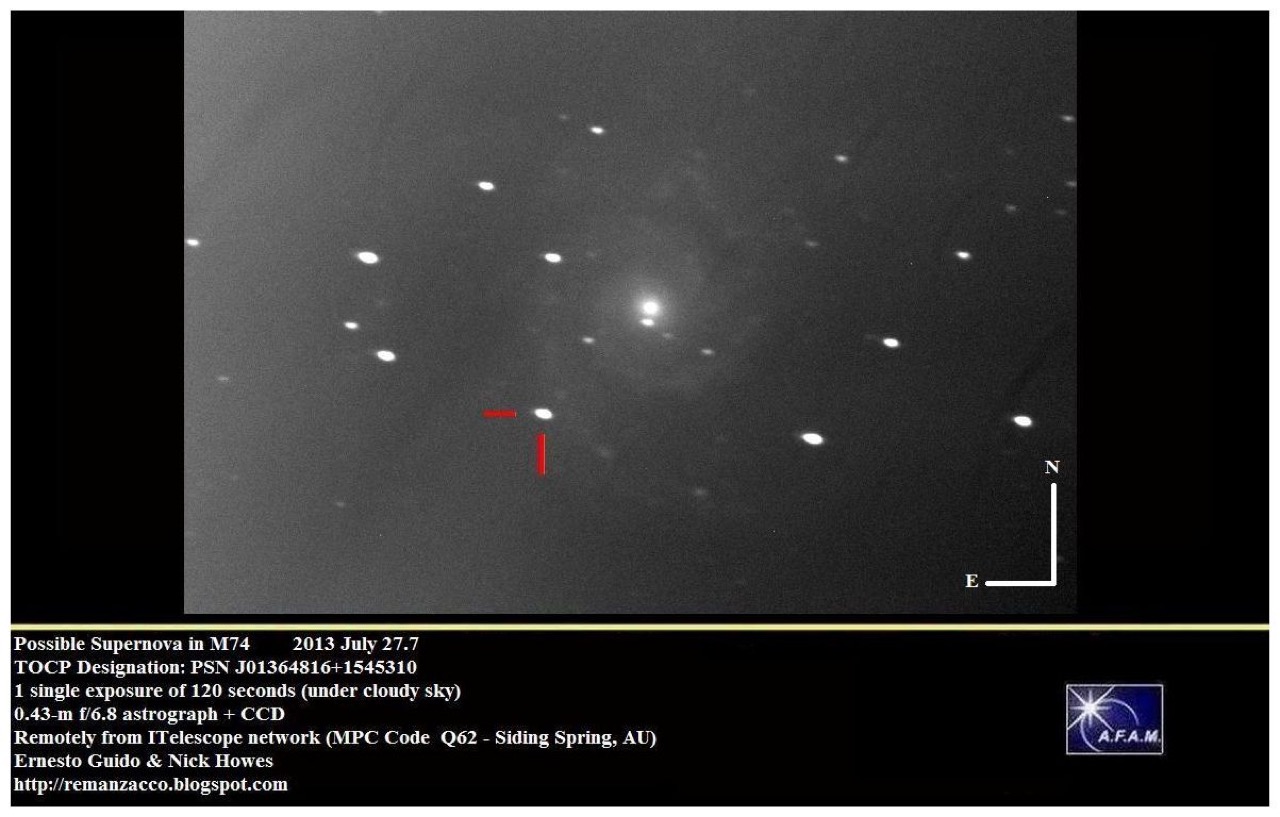A new supernova has appeared in the galaxy M74.
New is relative of course, since M74 is around 30 million light years away. That puts the date of the explosion a little less than half-way between the present and the end of the dinosaurs.

Supernova 2013ej
A probable progenitor star has already been found using archival imagery from the Hubble and Spitzer Space Telescopes. It sounds like it was an M-type red supergiant, which is consistent with the data indicating a Type II supernova.

Light Curve for SN2013EJ
A light curve showing the evolution of the supernova’s brightness is being updated regularly on the American Association of Variable Star Observers (AAVSO) event page.
I’ve always found supernovae fascinating. That something so large, powerful and long-lasting as a star can die so violently is a clear reminder that everything changes in the universe. Yet events of this magnitude are the forge where nearly every critical element to modern society is created.
This marks the third supernova in M74 over the last eleven years. You can find more detail and a slightly-vertigo-inducing before-and-after animation on the Remanzacco Observatory’s confirmation post.
